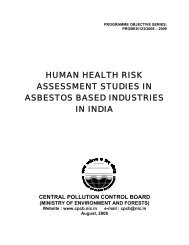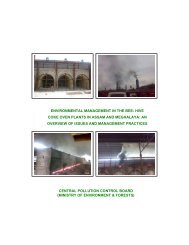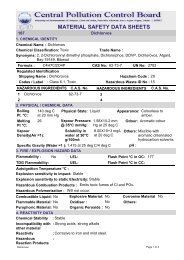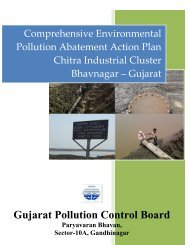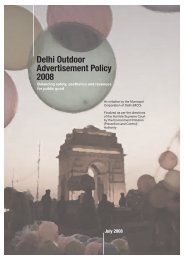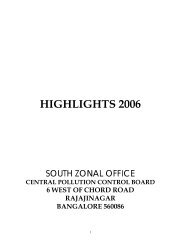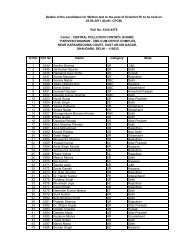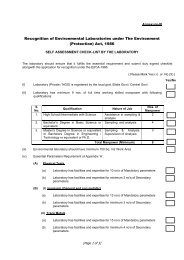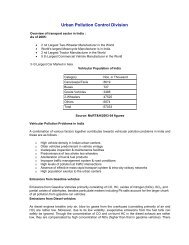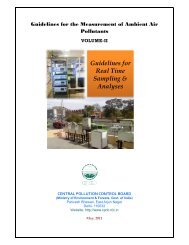Q ST QUA TAT ALIT US O TY IN OF W N IN WA NDIA ATER A- 2 R ...
Q ST QUA TAT ALIT US O TY IN OF W N IN WA NDIA ATER A- 2 R ...
Q ST QUA TAT ALIT US O TY IN OF W N IN WA NDIA ATER A- 2 R ...
You also want an ePaper? Increase the reach of your titles
YUMPU automatically turns print PDFs into web optimized ePapers that Google loves.
4.1 Indus River SystemCHAPTER IVWater Quality of Rivers in Indus BasinThe Indus Basin is bounded on the east by the Great Himalayas, on the north bythe Karakoram and Haramosh ranges, on the west by the Sulaiman and Kirtharranges and on the south by the Arabian Sea. The basin in Indian Territory has amaximum east-west length of about 855 km and maximum north south width ofabout 560 km.The Indus rises near Manasarowar Lake in Tibet Plateau (China). The river hasfive tributaries in India; they are the Jhelum, the Chenab, the Ravi, the Beas, andthe Sutlaj. The Jhelum, the Ravi and the Sutluj rivers each have a considerablelength running along the international boundary.The basin area of Indus is covering the States of Jammu & Kashmir, Haryana,Himachal Pradesh, Punjab, Chandigarh and Rajasthan., The important urbancentres in these States are Ambala, Shimla, Jalandhar, Moga, Pathankot,Ludhiana, Batala, Patiala, Hoshiarpur, Amritsar, Bathinda, Abohar, Ganganagar,Chandigarh, Barnala, Faridkot, Fazilka, Firozpur, Firozpur Cantt., Gurdaspur,Kapurthala, Khanna, KotKapura, Malerkotla, Malout, Mansa, Muktsar,Phagwara, Rajpura, S.A.S.Nagar, (Mohali), Sangrur, Nabha, Panchkula UrbanEstate, Hanumangarh.4.2 Water Quality Monitoring in Indus BasinThe State Pollution Control Boards of Himachal Pradesh, Punjab, Haryana andRajasthan carry out the water quality monitoring of tributaries of River Indus inthe basin. The tributary streams covered under the monitoring programme areBeas, Satluj, Sirsa, Swan, Largi, Parvati, Tawi, Gawkadal, Chuntkol, Jhelum,Chenab, Baspa, Binwa, Neugal, Siuel, Spiti, Suketi Khad, Basanter, Devak,Banganga, Ujh, Kali bein and Ravi. The ranges of water quality observed withrespect to Temperature, pH, DO, Conductivity, BOD, Nitrate+Nitrite, TotalColiform (TC) and Faecal Coliform (FC) are presented as minimum, maximumand mean value to assess the extent of water quality variation throughout the year.4.2.1 Water Quality of River BeasThe Water quality of River Beas indicates that pH, conductivity, BOD, DO andTC are meeting the water quality criteria at all locations. With respect to FaecalColiform & Total coliform the river is complying with the permissible limit ofwater quality criteria for bathing except U/S Mandi. The BOD value ranges from0.1-2.7 mg/l. The count of Faecal Coliforms ranges from 2 to 7000 MPN/100mlwhereas Total Coliforms ranges from 3-29000 MPN/100ml. The Water Quality of49



